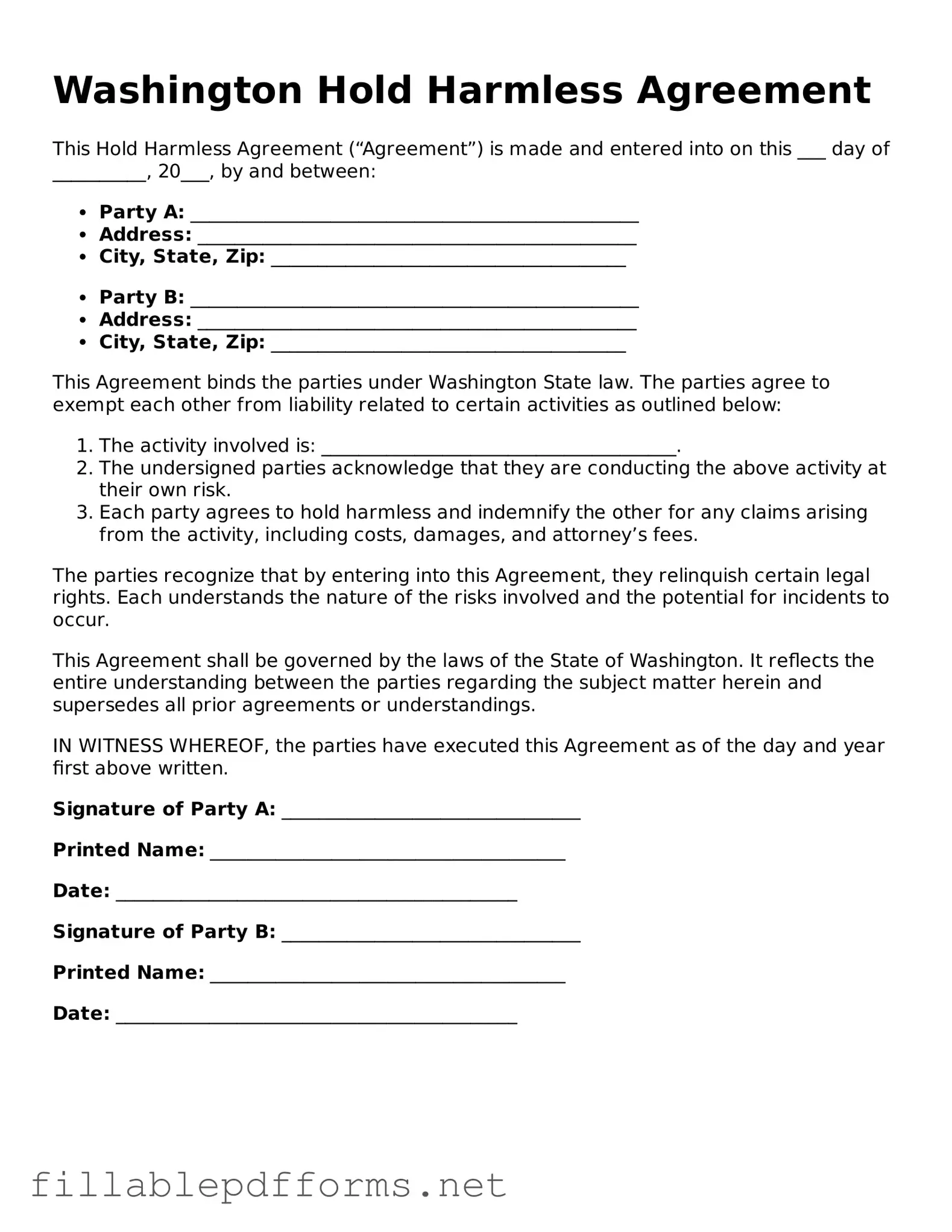Attorney-Verified Hold Harmless Agreement Form for Washington State
The Washington Hold Harmless Agreement form is a legal document designed to protect one party from liability for certain actions or events. By signing this form, individuals or organizations agree to assume the risk and hold the other party harmless in case of any claims or damages. This agreement is commonly used in various contexts, including construction projects and recreational activities, ensuring clarity and security for all parties involved.
Launch Editor Here
